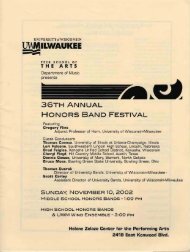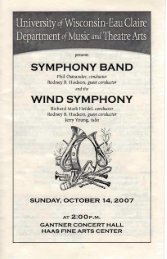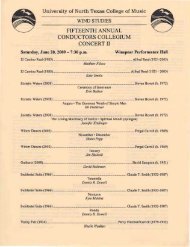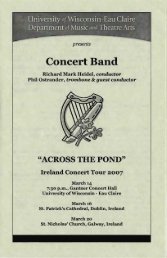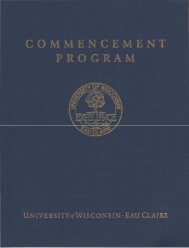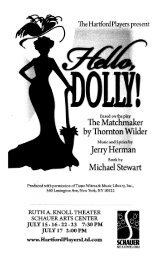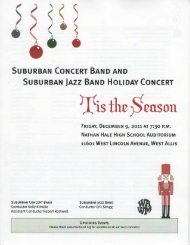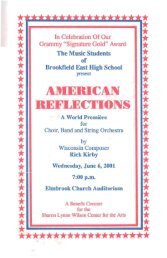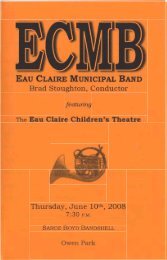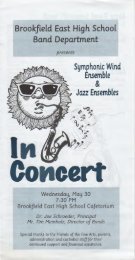about alexandre tharaud - Jim Skaleski
about alexandre tharaud - Jim Skaleski
about alexandre tharaud - Jim Skaleski
Create successful ePaper yourself
Turn your PDF publications into a flip-book with our unique Google optimized e-Paper software.
MIROIRS<br />
Ricardo Vines first performed Miroirs (Mirrors) in 1906. Each movement<br />
was intended to manifest the visual images and ambience evoked when<br />
a certain person (those who received the dedications) looked into the<br />
mirror. With further insight into the piece, it might be surmised that the<br />
reflections are revealing parts of Ravel himself being projected onto these<br />
separate beings.<br />
• Noctuelles (Night Moths), dedicated to Leon-Paul Fargue - This<br />
piece begins with highly chromatic pianissimo scampering across the<br />
keyboard. The calmer middle section makes use of chordal melodies<br />
and a pedal point; this is followed by a return to the introductory<br />
material.<br />
• Oiseaux tristes (Sad Birds), dedicated to Ricardo Vines - A lone bird<br />
sings its sad song at the beginning; other birds reluctantly join. The wild<br />
and raucous middle section is offset by a slow, solemn cadenza, which<br />
returns the piece to the solitude and loneliness of the opening.<br />
• Une barque sur I'ocean (A Boat on the Ocean), dedicated to Paul<br />
Sordes, a painter and fellow member of the Apaches - This piece is<br />
based around a flowing arpeggio, with simultaneous melodies in the<br />
upper and middle registers. The next section changes key abruptly, and<br />
a muted climax is followed by a striking passage: a tremolo in the right<br />
hand is accompanied by a tremendous arpeggio in the left hand; when<br />
the two meet at fortissimo at the top of the register, they cascade back<br />
down the piano. The central section of the piece is based around an<br />
ostinato in the extreme upper register; this forms the accompaniment<br />
for a Spanish melody. The accompaniment and melody become more<br />
insistent, until a fortississimo climax is reached. The tension slowly gives<br />
way, and the opening theme returns, providing the piece with a sense<br />
of calm and closure.<br />
• A/borada del gracioso (The Comedian's Aubade), dedicated to M.<br />
D. Calvocoressi, the provider of the text to Ravel's Cinq melodies<br />
popu/aires grecques - This piece is heavily influenced by Spanish<br />
themes, with the introductory chords reminiscent of guitars. The piece<br />
is marked by sharp dynamic and textural contrasts; it contains both<br />
stunning melodies and passages of considerable virtuosity.<br />
• La vallee des cloches (The Valley of Bells), dedicated to Maurice<br />
Delage, Ravel's first pupil - It is believed that the inspiration of the<br />
piece lay in the sound of church bells, though it is unknown whether<br />
Ravel's "Valley" is Swiss or French. Ravel evokes many different bells<br />
throughout this piece; from the delicate bells of the opening to the<br />
quietly booming bells of the close. Some of Ravel's most striking<br />
melodies occur in this piece, often with lush harmonizations.<br />
5



